

A Lea-Francis was a ‘dream bicycle’ in its day and, such is its rarity over a century later, it remains so today.
But which quality three-speed gent’s bicycle might you buy in 1908 if money were no object?
A cheap option for a quality bicycle would be a machine built with BSA Fittings. For example, John Piggott Ltd advertised the same in Cycling magazine of June 1908, for 7 guineas.
The Imperial Triumph with three speed was £13 10/-.
A Gentleman’s Elswick Special Cross Truss with Sturmey-Archer three speed was £13 15/- 6d, and the Royal Premier was 14 guineas.
The basic Dursley Pedersen Cantilever was £12 17/- 6d; extras were another 22/- 6d.
Rudge-Whitworth’s most expensive machine (a No 6 Aero-Special de Luxe Featherweight with Sturmey-Archer Tri-Coaster hub brake) was £14 12/-.
The Golden Sunbeam with two-speed epicyclic gears was 15 guineas, and with three speed it was 16 guineas.
As you can see from the 1907 Lea Francis catalogue illustration below, the Lea-Francis Men’s Bicycle with Sturmey-Archer three speed was 16 guineas.
Raleigh’s top of the range Modele Superbe X Frame was £17 10/- with no extra cost if paid in 12 monthly instalments.
The Centaur Featherweight with SA three speed was £18 15/- (the three-speed added £3 to the basic option) and the 1909 Resilient would be 17 guineas.
Prices are approximate because some were taken from previous year’s catalogues and some from year later. Prices fluctuated from year to year, and cash purchases were often cheaper than advertised in the catalogues. But we can see from this comparison that Lea-Francis prices were toward the upper end of the quality market. A Lea-Francis machine was built to such a high standard the company enjoyed almost cult status.
Like all their competitors in the top end of the market, their components were unique in order to prevent unscrupulous companies making cheap copies of their machines.
This example has concealed roller lever brakes, 1908 being an early adoption of this feature, patented by Lea Francis. Other patent features are the unusual LEAF aluminium pedals and ‘trip motion’ lever.
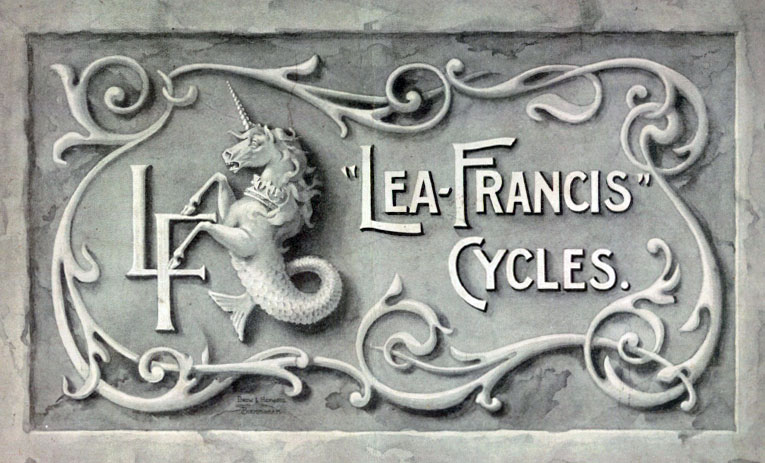

1908 Lea-Francis Men’s Cycle
with Concealed Roller Lever Brakes
27″ Frame
28″ Wheels
Frame No 21029
Aluminium ‘Roman’ Rims with BSA Three-Speed Hub
‘LEAF’ Aluminium Pedals
Brooks B92 Saddle (Restored)
(Now sold)
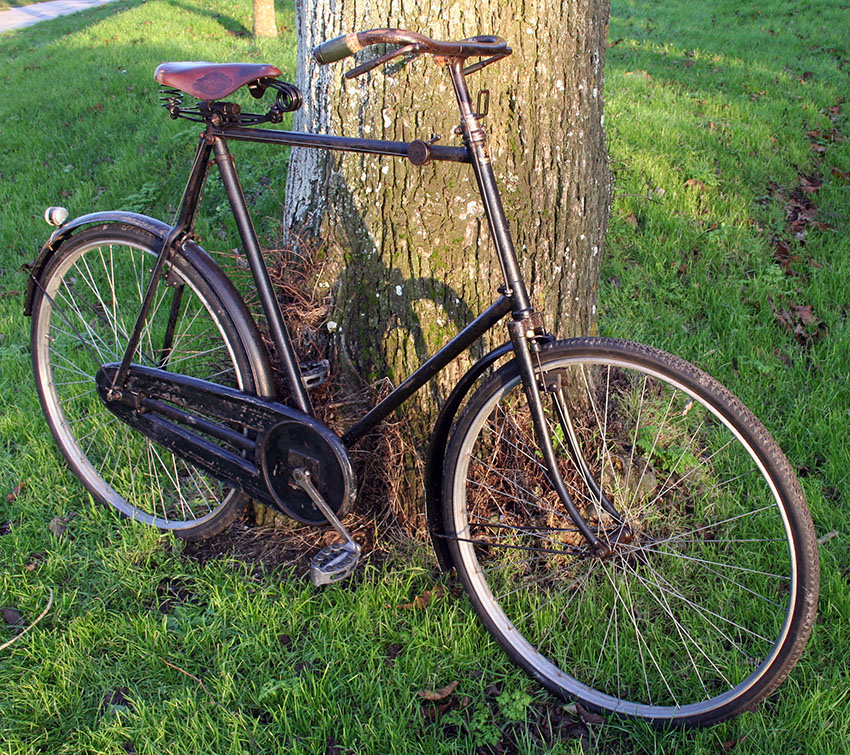





This fabulous machine was previously owned by my friend Brian, who lives in Wiltshire. I first met him many years ago when I purchased from him a 1914 James Mercury Lady’s bicycle. Brian tells me that he came across this Lea Francis in the 1990s. He was at an auction to bid on a Sunbeam he fancied. He didn’t win the bidding, and a chap behind him tapped Brian on the shoulder and offered him a similar Sunbeam. The seller lived in Coventry, some distance from Brian’s home, so Brian arranged to visit him on the way to the annual Riley Owners Club rally near Coventry.
Brian hitched up his home-made trailer to his 1932 wood-bodied Riley and drove to see the Sunbeam. He found the bike, with several others, in an open-fronted shed. He purchased several machines from the seller (including the James Mercury Lady’s mentioned above), creating much interest when he arrived at the car rally with bicycles piled up in the trailer. He had spotted the Lea Francis in the shed, but couldn’t afford it on that trip. So he returned the following year to buy it.
In early 2012, I discovered a bicycle advertised in an auction in Chippenham that had a Lea-Francis toolbag fitted to the saddle. The auctioneer’s description of the bicycle was ridiculously poor, as is often the case, so I signed up for telephone bidding. I resolved to bid up to £300 for this ‘bicycle of unknown manufacture’ as I wanted the toolbag. But the bidding went much higher and I dropped out at £650. Of course, I assumed the bicycle might be a Lea Francis, but I could not tell for sure from the small photo. I did not know who won the auction until summer 2012, when I phoned Brian for a chat. He told me he’d entered a Lea-Francis in a forthcoming auction. So I went to the auction and won the bidding. This is the bike. When we talked about it subsequently, I discovered he was the person in the Chippenham auction saleroom bidding against me. It was only because he won that Lea-Francis at the Chippenham auction that he decided to sell the one you see here. So we both ended up with a Lea Francis.
But this story never ends! A few days after getting the Lea Francis at the auction, my friend Robert decided he wanted it. So we did an exchange. A year later Robert decided he wanted to do another bicycle exchange in order to obtain my 1910 Raleigh (with concealed roller lever brakes; seen on another page). I visited him and, over lunch at a veggie cage in Hackney, we worked out how to solve his latest problem: because, that morning, he’d pulled out the old Premier bicycle from his basement that he intended swapping for my Raleigh; however, he liked it too much. So he decided to exchange this Lea Francis instead as, with its 27″ frame, it was too tall for him to ride.
I don’t usually add personal bike histories to a page, mainly because cycles don’t have logbooks to retrieve their ancient history. But this one seems to be having an eventful life lately. As Robert did a lot of work on the Lea Francis since getting it from me, I had to pay him extra. So now I will sell it, and I hope its new owner will add to this story…

LEA FRANCIS PATENT PARTS:
TRIP MOTION
HEAD LOCK
CONCEALED ROLLER LEVER BRAKES
BRAMPTON ‘LEAF’ PEDALS

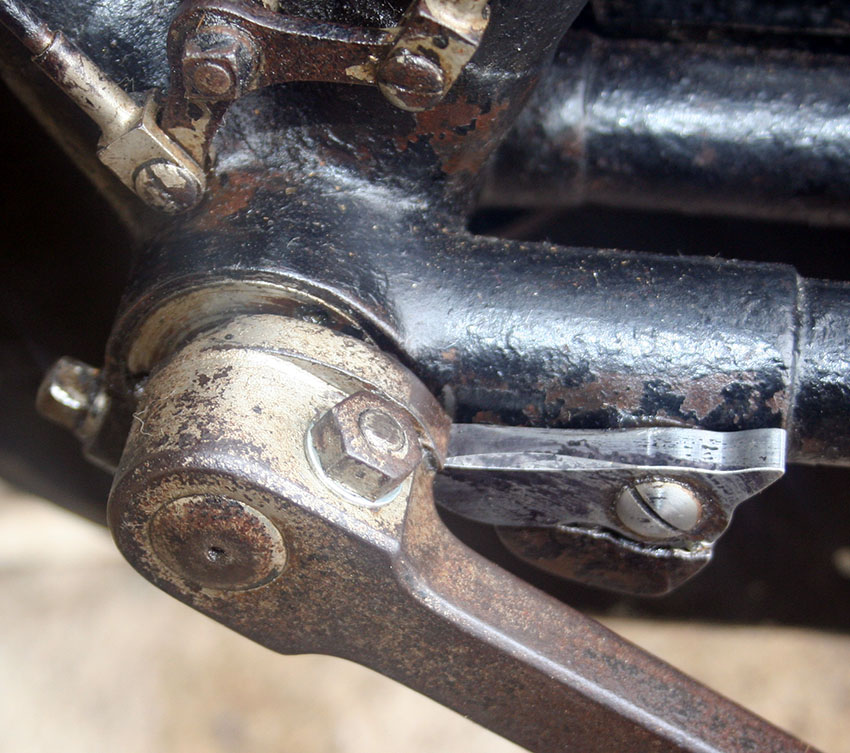

HEAD LOCK



HOUSING FOR OILER
The oiler is housed in the handlebar stem, accessed by a removable cap engraved with the company’s name.



CONCEALED ROLLER LEVER BRAKES



BRAMPTON ‘LEAF’ ALUMINIUM PEDALS (LEA FRANCIS PATENT)
Lea Francis patented this special design, a ‘Leaf’ pedal, which was made for them by Brampton. They were also an option on Dursley Pedersen machines.
Observe that the pedal name LEAF relates to LEA Francis, as well as being in the shape of a leaf.




1907 LEA-FRANCIS CATALOGUE


























FROM ROGER S. THORNE’S LEA-FRANCIS ARCHIVE
Roger S. Thorne was a Lea-Francis bicycle owner in the 1960s. His Lea-Francis was also a 1908 model though, from the description on the display board he used when taking his bicycle to shows (reproduced below), it was slightly different from the machine featured here.
He knew A.G. Wilson, who worked for the Lea-Francis from 1897 to 1908, and he corresponded with Peter Pringle of the Lea-Francis Owner’s Club.
I bought these letters at an auction in 2010 (along with the original 1901 Lea-Francis catalogue referred to in the letters) and am pleased to be able to publish them to be shared by fellow enthusiasts of this fascinating marque.










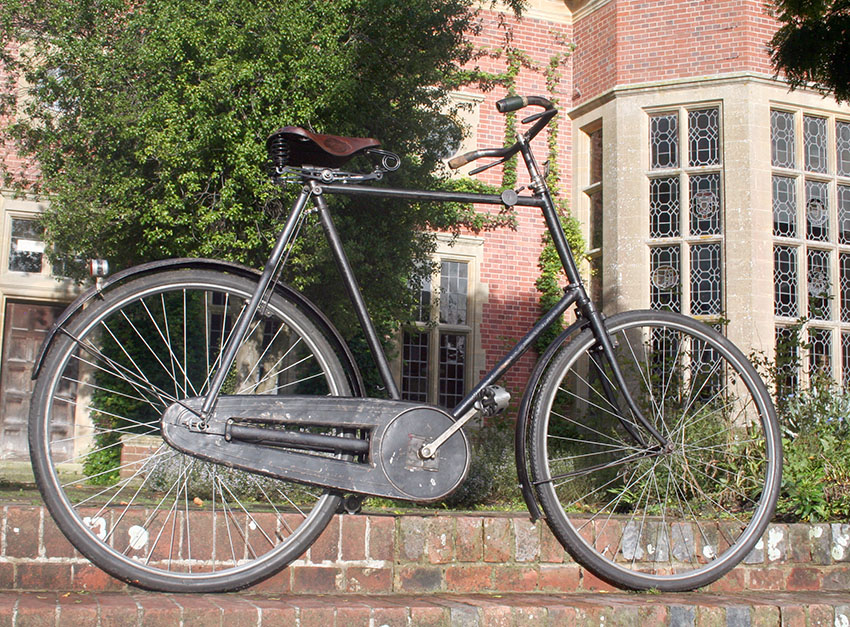







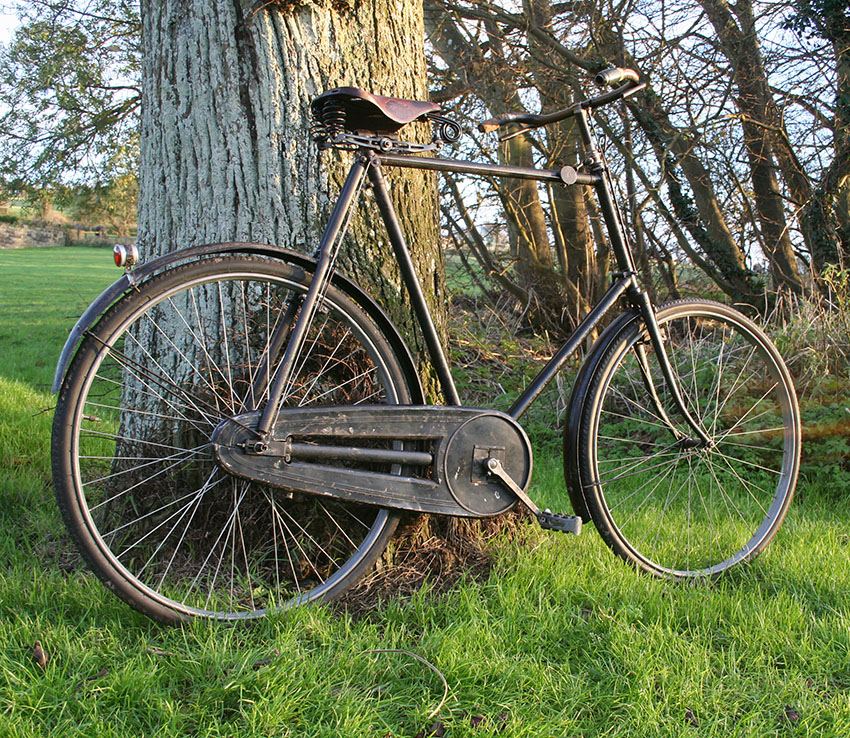

1907 BROOKS B92 SADDLE
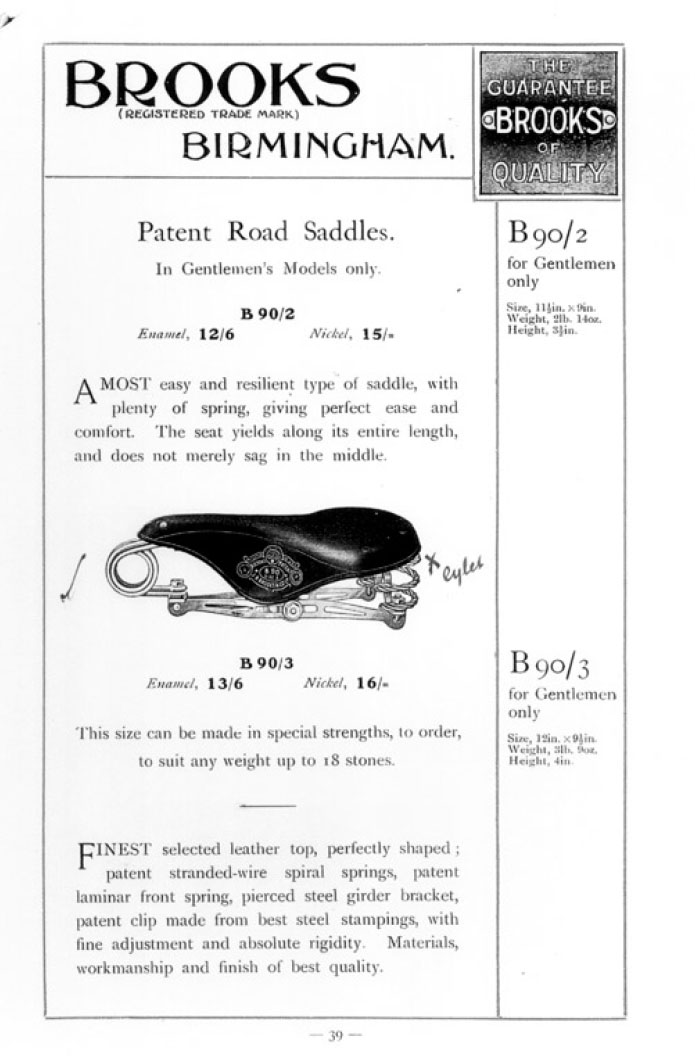

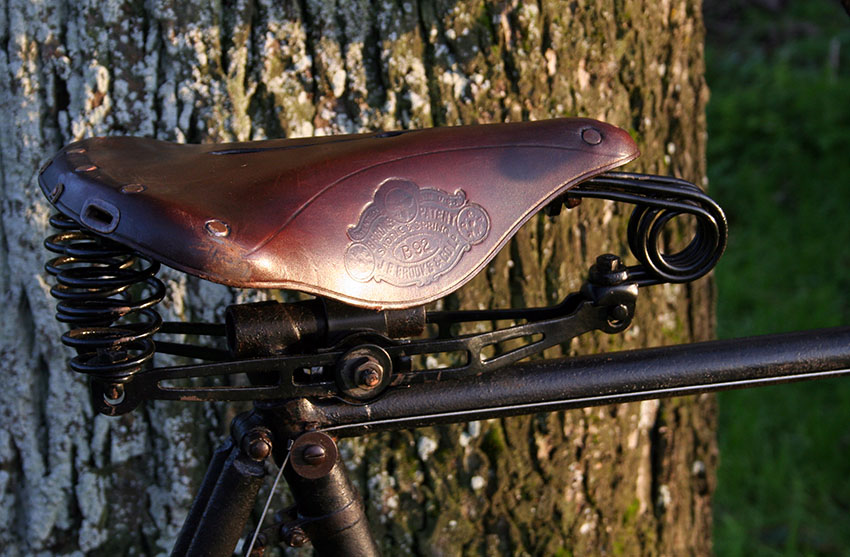







PHOTO LOCATION: Glyndebourne, E. Sussex, and Brighton seafront








































































